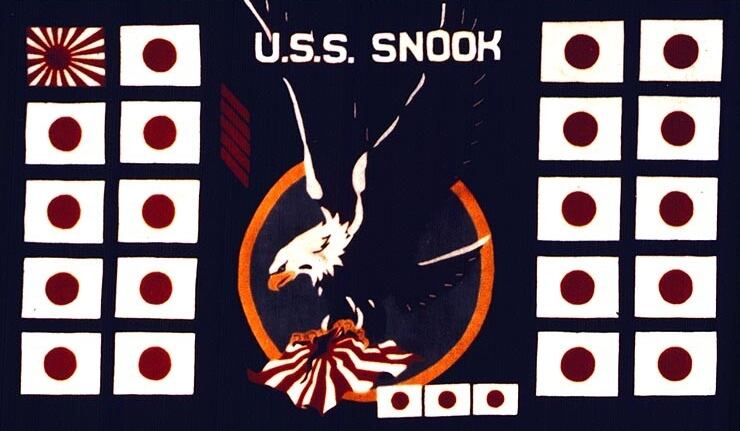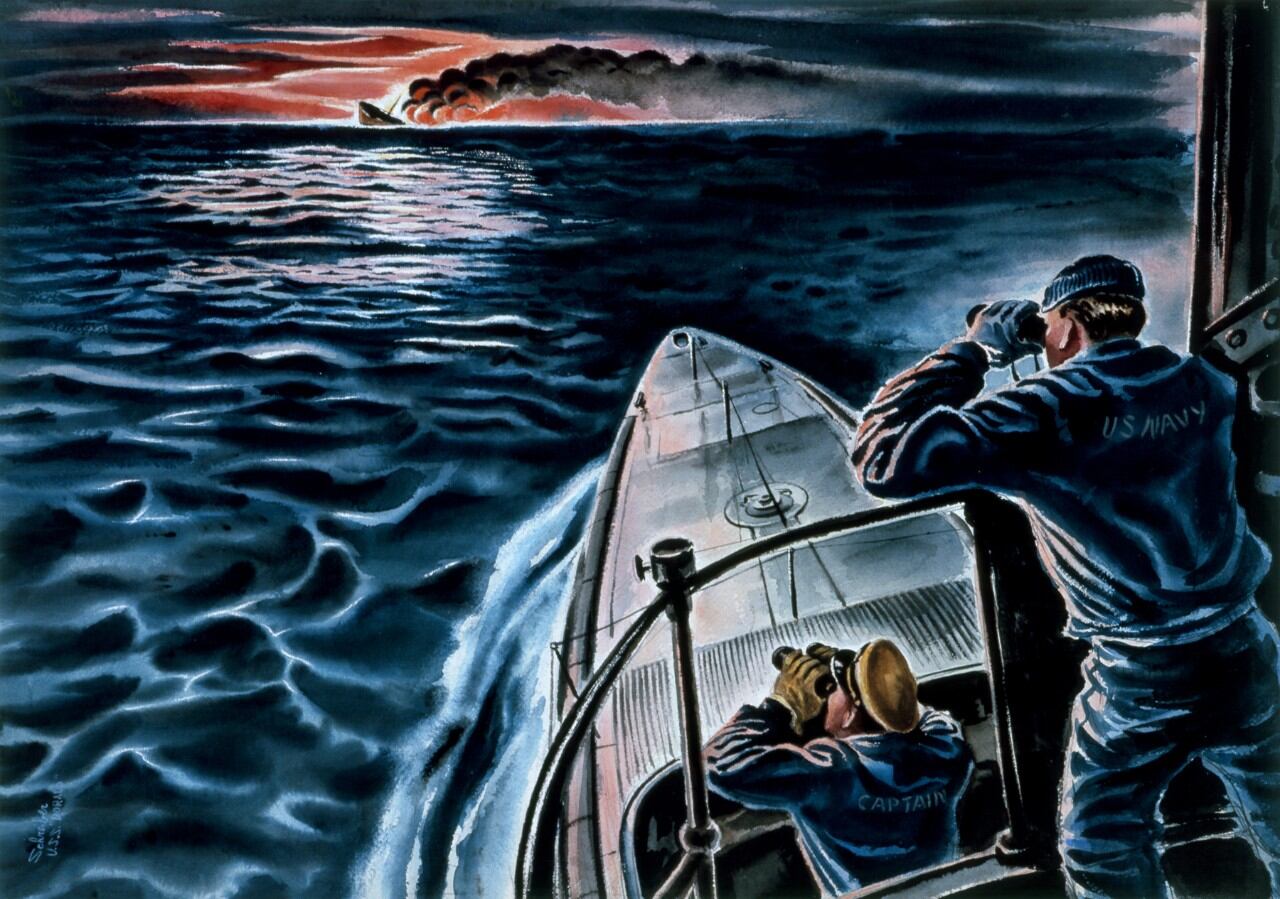GROTON, Conn. — For 65 years, Gov. Ned Lamont’s father kept a photograph of his older brother next to his bed.
Last week, the governor took home his own keepsake of his uncle, Seaman 1st Class Thomas W. Lamont II, who served on the World War II submarine Snook.
It went missing 75 years ago with all 84 crew members on board.
Officials at the Naval Submarine Base presented the governor with several artifacts from the Snook. Both the final location of the boat and the cause of its sinking remain unknown.
Lamont, who was visibly moved and surprised by the gesture, said to base commander Capt. Todd Moore, “You don’t really understand what missing in action means until you see my grandmother every day expecting her son Tommy to come back soon.”

Lamont said while his family has a lot of memorabilia from his uncle’s Navy service, they don’t have anything from the Snook.
He received a copy of the menu from the 1944 Christmas dinner on board the Snook which featured Waldorf salad, roast turkey and pumpkin pie, and included the names of all the crew members.
"I'm afraid it ended up being a last supper," Lamont said, as the submarine went missing in the spring of 1945.
He also received a copy of the thank you note sent by the commanding officer’s wife to each crew member, and a letter from a crew mate of his uncle’s, who regularly wrote home. The letter references a Christmas tree that was sent from Connecticut overseas to the Snook.
"The cedar tree was very dry but still smelled cedarish and Connecticutish," wrote Harry Julian, of Deep River, a sailor aboard the Snook.
Referring to another crew member who was from Willimantic, Julian said, “Jack Regan agreed it smelled just like home.”

Lamont said he wished his father were still alive so that he could see the documents.
"He would've memorized that letter and Christmas menu," he said.
Lamont also got to hold a piece of the Snook's periscope, which fell off when the sub was departing for its ninth and final war patrol after it smacked into one of its escort boats.
The piece that broke off was given to the commanding officer, Cmdr. J.F. Walling. The Navy does not know whom he sent it to, but they believe he sent it to his wife.
"No! Oh my god!" Lamont exclaimed upon being shown the scope.
And then he quipped, “That’s really from the Snook. You sure?”
Lamont, who was born nearly 10 years after his uncle died, said his family members talked regularly about him.
“You would’ve thought he had died yesterday the way everybody talked about him,” the governor said.
RELATED

During its ninth war patrol, the Snook, proceeding westward from Guam, was tasked in April 1945 with joining a coordinated attack against the enemy.
Snook was lost while conducting its ninth war patrol in the South China Sea and Luzon Strait.
The submarine reported its position to the submarine Tigrone on April 8, 1945, but did not acknowledge messages sent from Tigrone the next day.
Despite that, it was presumed that Snook had headed toward the Luzon Strait in the Philippines, and several days later the submarine was ordered to head north toward the Sakishima Islands in Japan in support of British carrier air strikes.
On April 20, 1945, the commander of the British carrier task force reported that he had a plane down in Snook's assigned area but that he was unable to contact the submarine by radio.
Snook did not respond to an order to search the area, so the submarine Bang was sent to try and locate the Snook to no avail. Snook was presumed lost on May 16, 1945.
The Navy says it believes the Snook was sunk by a Japanese escort ship. It’s also possible that a Japanese submarine torpedoed the Snook.
Throughout its prior eight war patrols, Snook was credited with sinking 22 enemy ships, totaling more than 123,600 tons.
The boat also damaged 10 ships, totaling 63,300 tons.
RELATED






